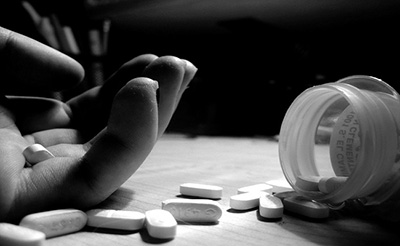
Source: www.freemalaysiatoday.com
Suicide has been approximated to be the cause of death for one million people each year, representing a global mortality rate of 16 people per 100,000, or one death in every 40 seconds. Unfortunately, it has also been projected that this rate will increase to one in every 20 seconds by year 2020. In Malaysia, the National Suicide Registry Malaysia (NSRM) found that there was an average of two suicides a day in 2011. Recently, alongside reports on crime in the recent months, there has been a steady stream of suicide cases highlighted in the media worldwide. Although we understand that suicide results from multiple and complex sociocultural factors as well as socioeconomic issues, there was a strong association between suicide and mental disorders, particularly depression and substance abuse.
Suicide not only produces tangible costs in terms of loss towards human productive resource, but it also produces emotional repercussion to the families which survive the suicide. This is the most unbearable intangible cost of suicide. To health care workers and mental health practitioners in particular, suicide remains a major complication of many major psychiatric disorders. Psychiatrists are often asked to assess patients presenting with a failed suicide attempt, acts of deliberate self-harm or to a lesser extent, those who harbour suicidal ideas alongside their depressive or psychotic symptoms. So this group of people had suicidal thoughts. Some of them could not go on and had really wanted to end it all. For those who survive their suicidal attempts, they are often asked on their intentions and their mental well-bemen stare assessed. Often, this process is undertaken by health care professionals. Sadly, some people may think these people were weak and or worst, ‘crazy’. These suicidal attempters may be ridiculed, lose their friends and at times; their jobs. Although this may sound far-fetched, attempts on one’s life happens each and every day
An example;
Imagine a person who has been burdened with depressed mood for years. Let us call her Mrs. B, she endures with this feeling daily apart from continuing her life as a mother, as an employer, as a wife, and as a family member who needs to portray an image of an-almost-perfect exemplary figure to others around her. A tall order indeed! This person lives on a day-to-day basis, wondering what the future (or is it just the next day?) holds for her. With no one to ask and unable to find help for her feeling she seeks god for refuge. At one point she realizes that the easiest way to solve her woes is by ending her life. Being educated and well-informed (like most suicide attempters are, these days), some sort of cognitive dissonance will eventually take place. Among examples which might be happening for Mrs. B could bethe fact that suicide is forbidden in most if not all religions. Also, other factors might be stopping her from acting out her thoughts such as the many resources available on dangers of suicide, the faces of her children crying over her dead body, the haunting dark past and that harming your body seems an act which only stupid people would choose to solve problems. All of these scenarios play in her mind until all her available coping mechanisms are exhausted. When this happens, she breaks down and she may start to act by leving a note or arranging her ‘affairs’ in preparation such as account changes and the like.
To this person, suicide is the answer. To him or her, it is probably the best answer to the suffering. When the suffering ends, the kids would not suffer and that’s a sacrifice. Literally and rhetorically. To the minds of most of us in the health care practice, this sounds too altruistic to be true. We say that suicide is a cowardly act. But not to the victims or survivors of suicide. It is a solution. It is a coping way to resolve their emotional pain. They have been in emotional tangles alone all these years and it is their own lives they had wanted to take. To them, when life gives them no meaning anymore, there are all the more reasons for them to carry out a suicide act.
No, I am not an advocate of suicide. I am urging us to look at the victims and survivors differently. Without stigma. Without prejudice. But with a deep understanding and compassion. We should understand that among the most basic needs according to Maslow’s hierarchy is survival in the form of safety and physiologically. Hence to want to die is not an easy wish. It is tougher to do it because this means that they are going against basic survival instinct. We should also be compassionate enough to comprehend that people who commit suicide do not actually want to end their lives; they only mean to end their pain, physical or emotional.
We often heard the quote – “suicide is never the answer, getting help is the answer”. However, when somebody chooses the wrong answer, let’s empathize and keep being compassionate. Otherwise, by no stretch of the imagination could we be called caring professionals.
This article is dedicated to the late Robin Williams, to whom we must forever say goodbye. If this article touches you in any way and you think you need help, kindly visit your nearest hospital to see one of the doctors there who will refer you to us in psychiatry, Alternatively, your general practitioner may be able to help and finally, when you are feeling lonely, do give Befrienders a call should you have no one to talk too.
Dr. Ruziana is a lecturer in psychiatry and teaches in University Putra Malaysia. She is a member of the executive board for the Early Career Psychiatrist.
[This article belongs to The Malaysian Medical Gazette. Any republication (online or offline) without written permission from The Malaysian Medical Gazette is prohibited.]
